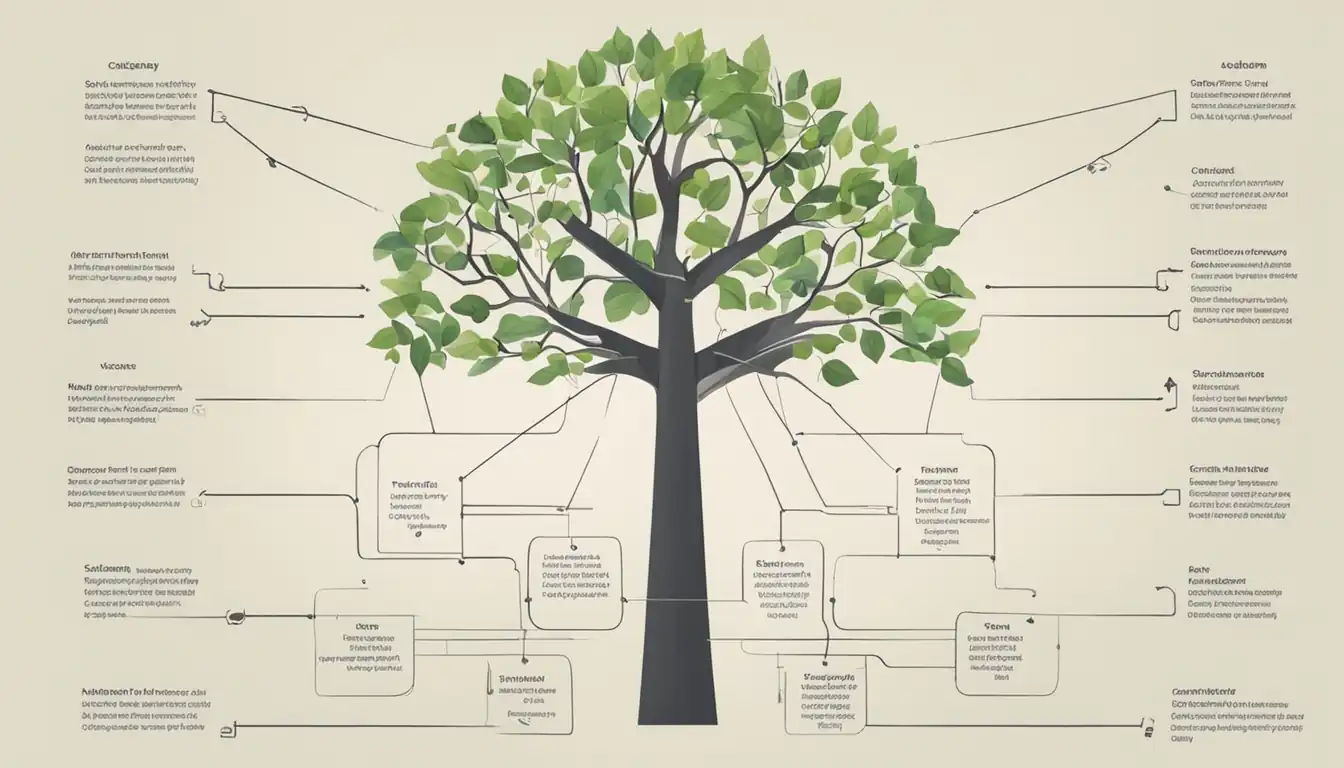Exploring the Benefits of Content Silo Structure in SEO

In the world of SEO, there are many strategies and techniques that can help improve a website's visibility and ranking on search engines. One such strategy that has been gaining popularity is the content silo structure. This approach involves organizing website content into distinct categories or topics to create a clear hierarchy that search engines can easily navigate. In this post, we will explore the benefits of using a content silo structure in SEO and how it can help boost your website's performance.
What is a Content Silo Structure?

Understanding the Basics
A content silo structure is a method of organizing website content into related themes or topics. This hierarchical structure helps search engines understand the relevance and relationship between different pages on a website.
How It Impacts SEO
Implementing a content silo structure can have several benefits for SEO:
- Improved Indexing: Search engines can easily crawl and index content within a silo, leading to better visibility in search results.
- Enhanced Relevance: By grouping related content together, you can establish topical authority and improve keyword targeting.
- Internal Linking: Silos facilitate internal linking between related pages, which can boost overall site authority and improve user experience.
- Reduced Cannibalization: Silos help prevent keyword cannibalization by clearly defining the focus of each section of your website.
A well-structured content silo can streamline your SEO efforts and improve the overall performance of your website in search engine rankings.
Planning Your Website’s Architecture
When it comes to optimizing your website for search engines, having a well-structured architecture is crucial. One effective way to organize your content is through a silo structure. This involves grouping related content together in a hierarchical manner, making it easier for search engines to understand the relevance and context of each page on your site.
The Role of Keyword Research
Keyword research plays a key role in planning out your website's silo structure. By identifying relevant keywords and topics that are important to your target audience, you can create silos that focus on specific themes or topics. This not only helps with organizing your content but also ensures that each silo is optimized for the right keywords, improving its visibility in search engine results.
Mapping Out the Silo
Once you have identified the main themes or topics for your silos based on keyword research, it's time to map out how they will be structured on your website. Start by creating a main category or pillar page for each silo, which will act as the hub for all related content within that theme. From there, create subcategories or supporting pages that delve deeper into specific aspects of the main topic.
By organizing your content in this way, you not only make it easier for visitors to navigate your site but also help search engines understand the relationships between different pieces of content. This can lead to improved rankings and visibility in search results, ultimately driving more organic traffic to your website.
Building a Strong Foundation
Building a strong foundation for your website is crucial in ensuring its success in the competitive world of SEO. One effective way to establish this foundation is through the implementation of a content silo structure.
Creating Topical Relevance
Content silos help to create topical relevance within your website by organizing related content into specific categories or themes. This allows search engines to easily understand the focus of each section of your site, making it more likely that your pages will rank higher in search results for relevant keywords.
Benefits of creating topical relevance through content silos:
- Improved keyword targeting
- Increased organic traffic
- Enhanced user experience
Linking Strategies Within Silos
Linking strategies play a key role in maximizing the effectiveness of content silos. By interlinking related pages within the same silo, you can strengthen the topical relevance and authority of each individual page, ultimately boosting their visibility in search engine results.
Key points to consider when implementing linking strategies within silos:
- Use anchor text that includes relevant keywords
- Ensure a logical flow of internal links within each silo
- Avoid over-optimization by maintaining a natural linking structure
In conclusion, incorporating a content silo structure into your SEO strategy can significantly benefit your website by improving topical relevance and enhancing linking strategies within specific themes or categories.
Practical Examples of Content Silo Implementation
Case Study from E-commerce
In an e-commerce setting, implementing a content silo structure can significantly improve the website's SEO performance. By organizing product categories into separate silos, each with its own set of related subcategories and content, the website can establish clear topical relevance for search engines. For example, a clothing retailer may create silos for men's clothing, women's clothing, accessories, etc., with each silo containing relevant blog posts, product descriptions, and internal links.
Insights from a Tech Blog
A tech blog can also benefit greatly from utilizing a content silo structure. By categorizing topics such as software reviews, hardware guides, troubleshooting tips, and industry news into separate silos, the blog can enhance its authority on specific tech-related keywords. This organization not only helps search engines understand the site's focus but also improves user experience by making it easier for visitors to navigate through related content seamlessly.
Implementing content silos in these real-world examples demonstrates how structuring content strategically can lead to improved SEO performance and user engagement.
Common Mistakes and How to Avoid Them

Over-Complicating the Structure
One common mistake that many website owners make when implementing a content silo structure is over-complicating the organization of their content. This can lead to confusion for both search engines and users, ultimately hindering the effectiveness of the SEO strategy. To avoid this mistake, it is important to keep the structure simple and logical. Group related content together in a way that makes sense and ensures easy navigation for both search engine crawlers and website visitors.
Neglecting User Experience
Another mistake to avoid when utilizing a content silo structure is neglecting user experience. While it is important to optimize your website for search engines, it is equally important to consider the needs and preferences of your human audience. Make sure that your content is not only organized in a logical manner but also provides value and relevance to your users. Keep in mind that a positive user experience can lead to increased engagement, lower bounce rates, and ultimately higher rankings in search engine results pages.
Conclusion
In conclusion, implementing a content silo structure in your SEO strategy can have numerous benefits for your website. From improving topical relevance to enhancing user experience, this approach can help you climb the ranks on search engine results pages. By understanding the basics, planning your architecture carefully, and avoiding common mistakes, you can leverage the power of content silos to drive more organic traffic to your site. So why wait? Start exploring the benefits of content silo structure today and watch your SEO efforts soar!